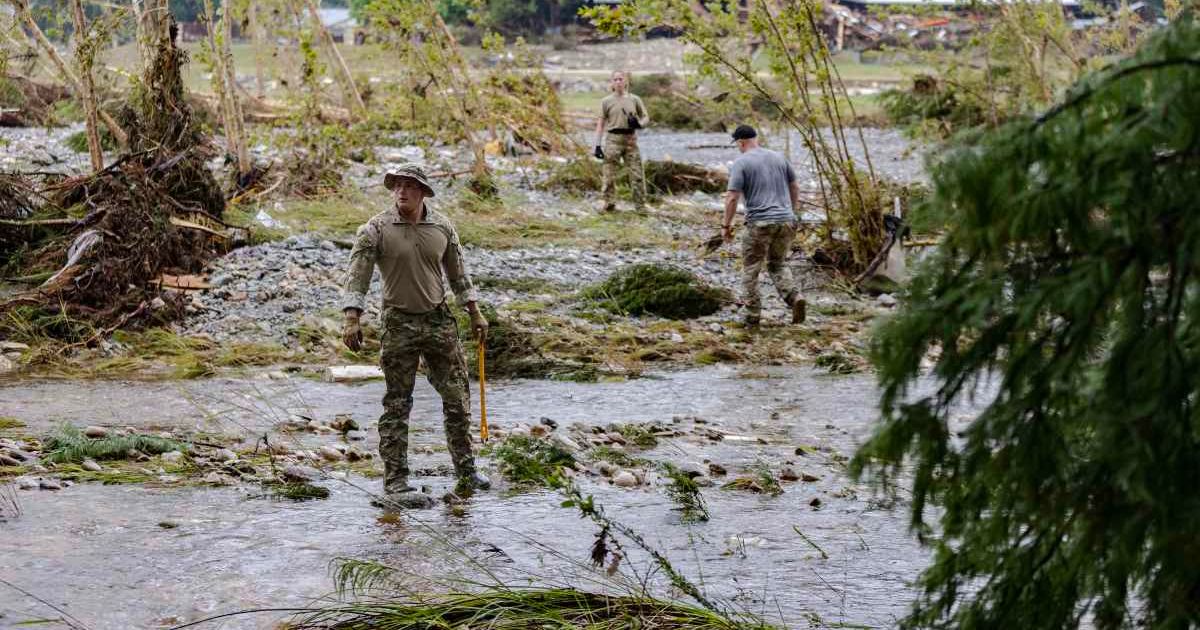Fact Check: No, Three Missing Girls Were NOT Found Alive in a Hollow Tree After Texas Floods
When tragedy strikes, people naturally cling to hope. That hope fuels prayers, rallies communities, and sometimes even leads to the spread of stories so extraordinary that they almost feel real—until they aren’t.
Earlier this month, a sensational claim ricocheted across Facebook, TikTok, and countless blogs: three little girls, missing after Texas’s catastrophic floods, had been found alive inside a hollow oak tree nearly 10 days later.
The story captured the internet’s imagination. It seemed to have everything — innocence, survival against the odds, and a miraculous twist of fate.
But here’s the truth: it never happened.
The Claim That Captivated the Internet
In mid-July 2025, a post appeared on Facebook that seemed too unbelievable — and too heartwarming — to ignore.
The post claimed that three young girls — Emily Rivera, Zoey Nash, and Hope Lin, all between the ages of 8 and 10 — had gone missing during the devastating flash floods that struck Texas over the Fourth of July weekend.
The floods, which hammered towns along the Guadalupe River, left a trail of heartbreak: more than 135 people lost their lives, and dozens remained unaccounted for.
The post told of a miraculous twist. The girls, it said, had survived for 10 long days inside a hollow tree, drinking rainwater and relying on survival skills from a recent safety drill at Camp Wrenwood, a summer camp just a mile away.
A collage of rescue scenes accompanied the post, along with a headline designed to spark both curiosity and hope:
“3 Missing Texas Girls Found Alive in Hollow Tree 1 Mile From Camp — They Survived Nearly 10 Days Thanks to These 2 Things…”
The reaction was immediate. The post gathered over 7,000 reactions and more than 1,300 comments within days. People left emotional messages — many praising the story as a miracle, others expressing gratitude to God for saving the girls.
“The BEST news!! Please be the TRUTH!!!!” one person wrote.
Another user added: “Thank you Lord. I believe they were saved because God has plans for them. To spread His words of Salvation and be worthy of His Kingdom.”
It was the kind of story that spreads fast in the age of social media — a glimmer of light in a world full of bad news.
But there was one problem: none of it was real.
The Fact-Checking Reality Check
By the end of July, fact-checking organizations like Snopes and independent researchers began digging into the viral claim.
The result was clear and unequivocal: the entire story was fabricated.
No credible news outlets had reported on such an event. Searches across Google, Bing, DuckDuckGo, and Yahoo turned up nothing from legitimate sources.
There were no official records of missing girls named Emily Rivera, Zoey Nash, or Hope Lin in connection with the floods — and certainly no reports of anyone being found alive inside a tree.
The so-called “miracle” was a modern digital hoax, the kind that has become disturbingly common in the age of AI-generated content.
How the Hoax Spread
The false story originated from a Facebook user identified as “American Colum,” whose post linked to a series of low-quality, ad-filled websites.
These websites are part of a growing trend: AI-driven content farms that churn out sensational headlines designed to attract clicks, traffic — and ultimately, advertising revenue.
Instead of reliable reporting, these sites offer recycled rumors and fabricated details, often with no bylines, no sources, and no accountability.
Many of the articles about the “three girls in the tree” were nearly identical, with minor wording changes — a classic tactic to dodge plagiarism filters while spreading the same false claim.
The Problem With Stories Like This
On the surface, a harmless fake miracle might not seem dangerous. But false stories like this have real consequences.
They erode trust in news. They divert attention from the real victims of tragedies like the Texas floods. And they can even slow down legitimate rescue and recovery efforts when misinformation spreads faster than official updates.
The Texas floods were devastating. Families are still grieving. Lives were lost. And yet, in the middle of that pain, a made-up story about three fictional girls found in a tree went viral — distracting millions from the real crisis.
The Emotional Pull of Miracles
Why did this story catch fire?
Because people wanted it to be true.
When disaster strikes, the human instinct is to search for meaning, to hope for the impossible — for stories of survival that defy logic.
This particular tale tapped into that longing. It combined the vulnerability of missing children with the idea of a “miracle,” and wrapped it in a narrative that felt like a movie plot.
The Bigger Picture: A World of Digital Myths
This is not an isolated incident. Experts warn that AI-powered fake news sites are increasingly creating “miracle stories” and shocking hoaxes to drive traffic.
These sites often mimic the look of legitimate media but exist solely to make money — regardless of the truth.
And as this hoax showed, people share before they check.
The Bottom Line
The story of the three missing girls in the hollow tree after the Texas floods was not a miracle. It was a manufactured myth.
It never happened.
But it reminds us of something important: in a digital world flooded with information — and misinformation — we must pause before we click, share, or believe.
Because sometimes, the most viral stories are the least true.
Source: Snopes, fact-check reports, and independent news verification
